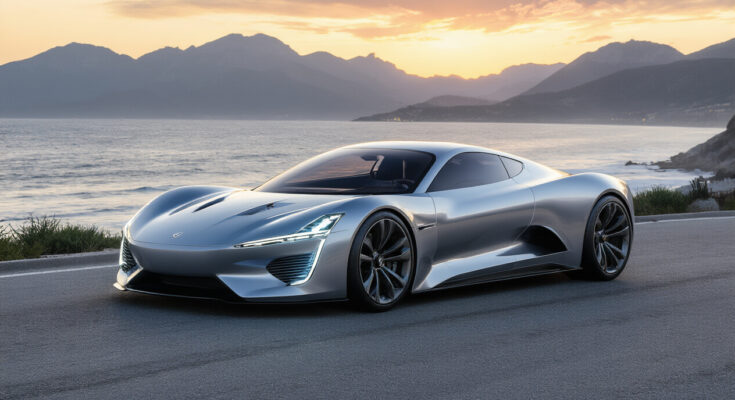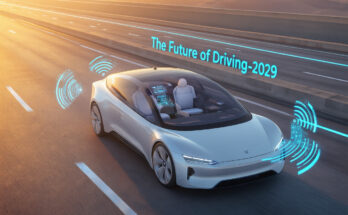Ever parked your car, walked away, then turned back for one more admiring glance? Not all vehicles deserve that second look. But automotive design masters have created stunning cars that aren’t just transportation—they’re rolling sculptures demanding our attention.
Whether you’re a dedicated car enthusiast or simply appreciate exceptional design, today’s most beautiful cars on the road transcend ordinary transportation. From the sinuous curves of Italian exotics to the precise lines of German engineering, these vehicles represent the pinnacle of automotive design.
What makes a car truly beautiful, though? Is it perfect proportions, innovative details, or something more ineffable? And which current model deserves the crown as the most stunning car available today?
The Evolution of Automotive Design
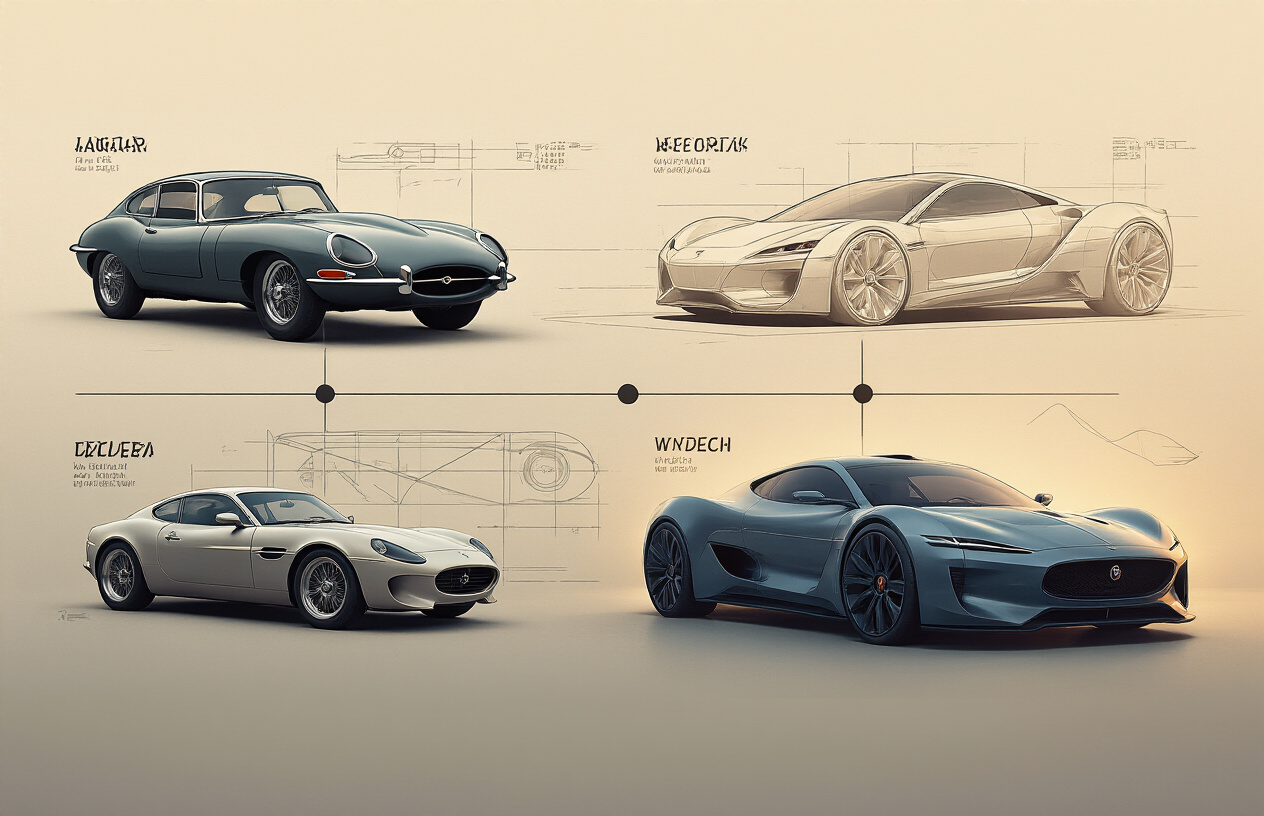
From Functional to Artistic: How Car Design Has Transformed
Remember when cars were just metal boxes with wheels? Yeah, those days are long gone.
Car design has undergone a radical transformation since the early days of automobiles. The Model T Ford wasn’t winning any beauty contests—it was purely functional, designed simply to get people from point A to point B. Practicality ruled everything.
Fast forward to the 1950s, and suddenly cars became statements. Cadillacs sprouted fins, chrome gleamed everywhere, and colors popped. This wasn’t just transportation anymore—this was self-expression on wheels.
The 80s and 90s brought us boxy, angular designs as aerodynamics and fuel efficiency took center stage. But even then, designers were pushing boundaries, playing with curves and lines to create distinctive looks.
Now? Car design is literally an art form. Just look at the flowing lines of a McLaren or the aggressive stance of a Lamborghini Huracán. These aren’t just vehicles—they’re rolling sculptures.
The Influence of Cultural Trends on Automotive Aesthetics
Cars don’t exist in a vacuum. They reflect the world around them.
The space race of the 60s? It gave us rocket-inspired taillights and futuristic dashboards. The environmental movement of the early 2000s? Hello, Toyota Prius with its “I’m saving the planet” design language.
Minimalism has swept through our homes and into our cars. Look at Tesla’s almost button-free interiors or the clean, uncluttered lines of modern Scandinavian car designs.
Digital culture has transformed car aesthetics too. Screens have replaced dials, LED lighting creates atmosphere, and connectivity shapes everything from dashboard layouts to exterior lines.
Regional influences matter more than ever. Asian markets prefer different styling cues than European ones. American muscle still has its own design language. And luxury brands like Rolls-Royce still incorporate handcrafted elements that speak to old-world craftsmanship.
Today’s Design Philosophy: Balancing Form and Function
The modern car designer walks a tightrope.
On one side: creating something breathtakingly beautiful. On the other: making something that actually works in the real world.
Aerodynamics demands certain shapes for efficiency, but designers find ways to make those requirements look stunning. Safety regulations dictate structural elements, yet somehow today’s cars look sleeker than ever.
Technology integration presents another challenge. How do you incorporate dozens of sensors, cameras, and radar units without making your car look like a science experiment gone wrong?
The most successful designs today achieve the impossible—they’re both practical and gorgeous. The Porsche Taycan somehow manages to be an all-electric technological powerhouse while maintaining classic sports car proportions. The Range Rover Velar combines genuine off-road capability with a silhouette that wouldn’t look out of place at a fashion show.
What’s truly impressive is how distinctive brand identities remain despite all these competing demands. You can spot a BMW or an Audi from a block away, even as their designs evolve with the times.
Luxury Supercars: When Price Is No Object
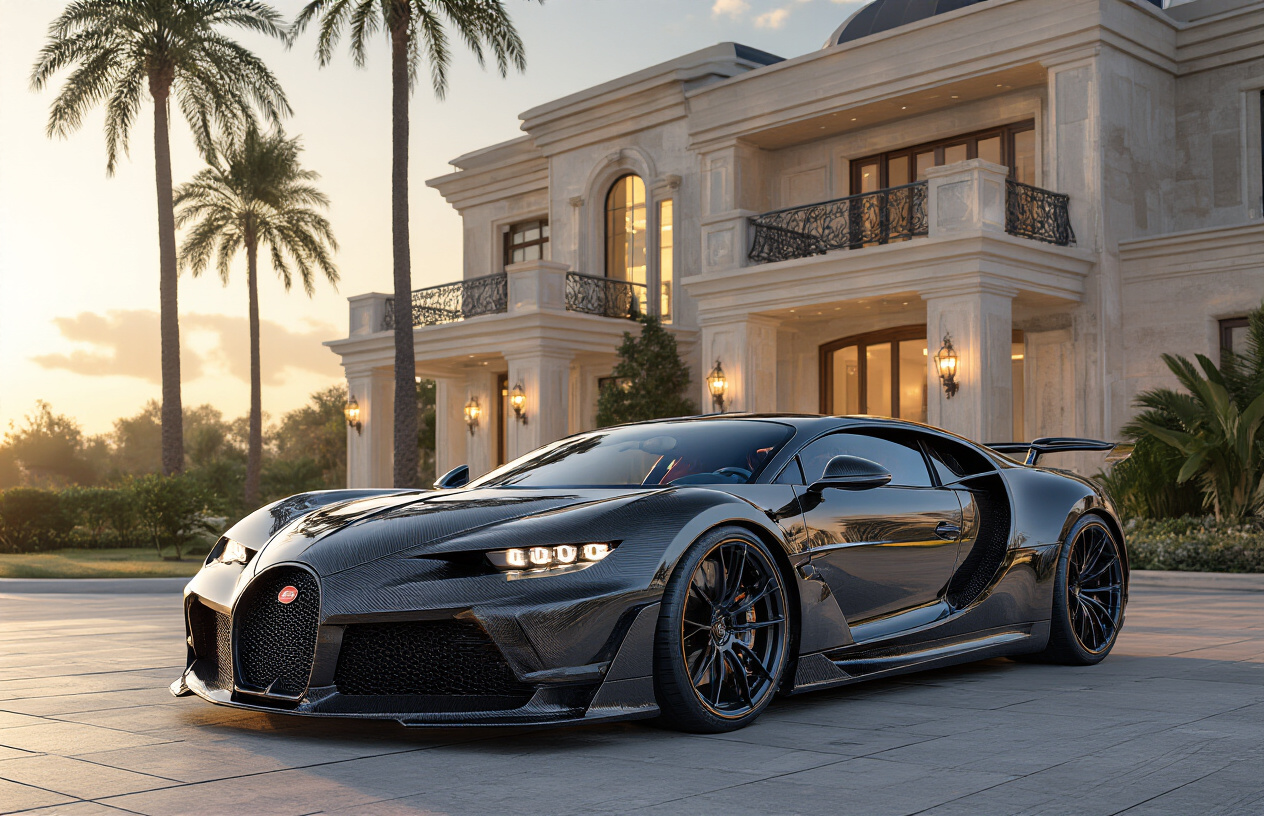
A. Ferrari’s Timeless Elegance
Money can’t buy taste, but when it comes to Ferrari, you get both by default. These Italian masterpieces don’t just move—they evoke emotion. The flowing lines of a Ferrari aren’t random; they’re calculated expressions of speed even when the car is standing still.
Take the Roma. Its clean silhouette pays homage to the 1960s GT cars without feeling retro. No unnecessary vents or gaudy wings—just pure, uninterrupted beauty.
Or consider the SF90 Stradale. Despite packing hybrid technology and nearly 1,000 horsepower, it doesn’t scream “look at me.” The design whispers instead, with curves that serve both aesthetics and aerodynamics.
What makes Ferrari different from other luxury brands? They understand restraint. When everyone else is adding more angles and creases, Ferrari is taking them away.
B. Lamborghini’s Aggressive Styling
If Ferrari is a symphony, Lamborghini is heavy metal at full volume. These aren’t cars—they’re automotive shock therapy.
The Aventador stands like a fighter jet that somehow got a license plate. All sharp edges, hexagons, and angles so aggressive they could cut glass. Nothing about it makes sense until you see it move, and then suddenly everything does.
The Huracán EVO takes a slightly more refined approach but still packs enough visual punch to make children point and adults stare. Its Y-shaped headlights have become a signature—instantly recognizable from blocks away.
What’s fascinating about Lamborghini’s design language is how it makes the impossible seem logical. Doors that open upward? Of course. Engine visible through glass? Obviously. A profile that looks like it was designed by someone who dreams in geometric shapes? Absolutely necessary.
C. Bugatti’s Engineering Masterpieces
The Chiron isn’t just a car—it’s architecture that happens to move at 300+ mph.
Bugatti doesn’t follow trends; they create objects that defy categorization. The signature horseshoe grille has evolved yet remained instantly recognizable across generations. Their two-tone color schemes don’t just differentiate them—they celebrate the car’s form by highlighting structural elements rather than hiding them.
The Divo takes this philosophy even further. Limited to just 40 units worldwide, it’s sculptural art with an engine. The way light plays across its surface reveals new details from every angle.
What separates Bugatti from other luxury manufacturers is their dedication to cohesion. Nothing feels arbitrary or added for shock value. Each curve, each intake, each surface transition serves both form and function with equal dedication.
D. McLaren’s Aerodynamic Innovations
McLaren builds cars like aerospace engineers who got bored with planes. Their designs don’t just manage air—they manipulate it like a conductor leads an orchestra.
The 720S appears almost skeletal, with “eye sockets” that channel air to cool the radiators while creating a face that’s impossible to forget. Their dihedral doors aren’t just for show (though they certainly create drama)—they improve cabin access while requiring less space to open than conventional doors.
What makes McLaren’s approach unique is their obsession with negative space. Where other manufacturers add elements, McLaren removes them, creating forms defined as much by what isn’t there as what is.
The Speedtail represents this philosophy perfectly—a teardrop shape stretched over nearly 17 feet, with flexible carbon fiber elements that actually change shape at speed to reduce drag. It’s not just beautiful; it’s intelligent beauty.
Mass-Market Marvels: Attainable Beauty
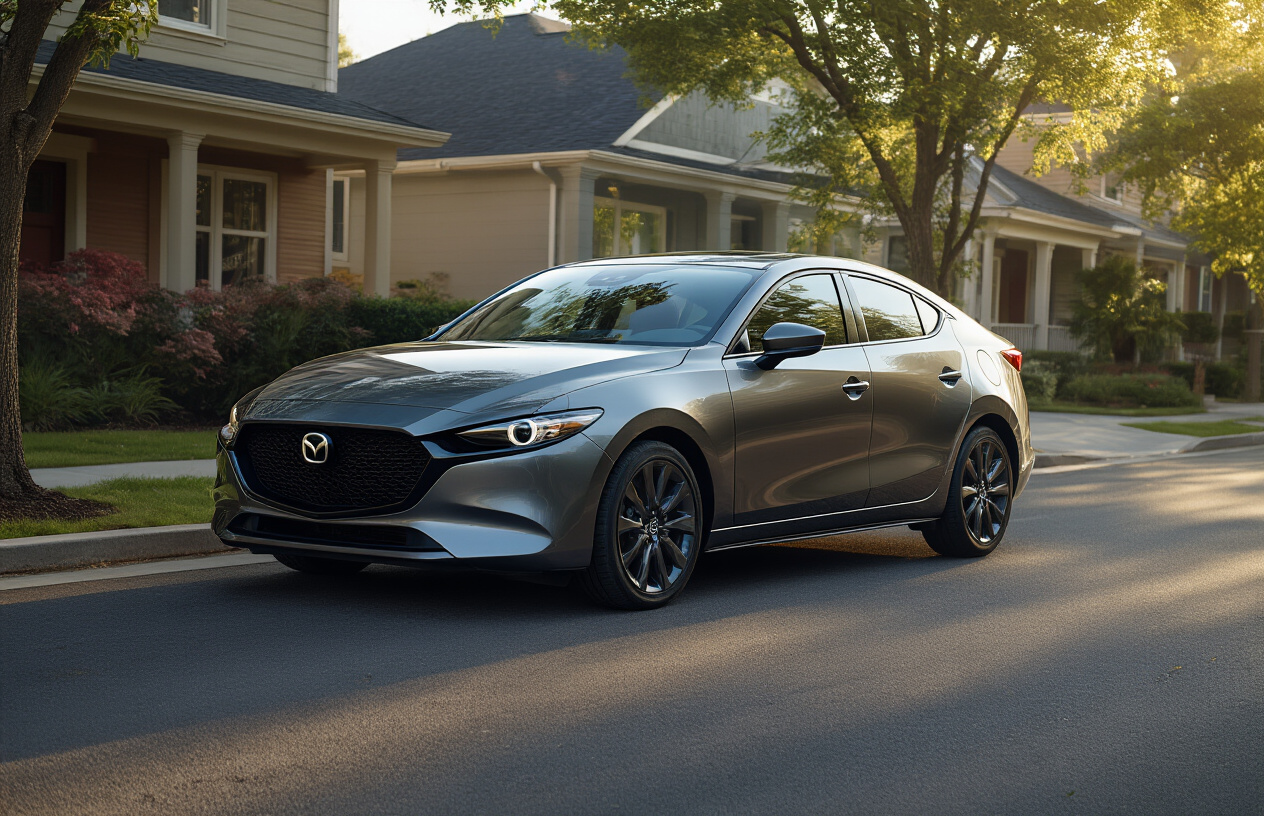
European Sophistication in Everyday Models
Beauty isn’t just for those with supercar budgets. Take the Mazda3, for instance. This compact sedan borrows design cues straight from concept cars that wowed auto shows. Its flowing lines and minimalist interior make you wonder how it costs under $30k.
Peugeot’s renaissance is another perfect example. Their 508 sedan throws conventional three-box design out the window with its fastback profile and those signature fang-like LED running lights. Even Volkswagen’s humble Arteon turns heads with proportions that scream “I should cost twice as much.”
What makes these European everyday cars stand out? It’s the attention to detail. The way light plays across the Arteon’s hood creases. The Volvo V60’s perfect Scandinavian proportions. The subtle muscularity in the Alfa Romeo Giulia’s rear haunches.
Asian Manufacturers’ Design Renaissance
Asian carmakers have gone from followers to leaders in the design world.
Kia and Hyundai lead this revolution. The Kia EV6 looks like it drove straight off a sci-fi movie set with its dramatic lighting and stance. Genesis (Hyundai’s luxury arm) crafted the G80 with such perfect proportions and that diamond grille that luxury stalwarts are playing catch-up.
Mazda deserves special mention again for their Kodo design language – “soul of motion” isn’t marketing fluff when you see a Soul Red CX-5 catching sunset light.
Even Toyota, once the poster child for boring design, now offers the Mirai hydrogen car that looks concept-car fresh and the new Crown with its radical fastback profile.
American Muscle: Modern Interpretations of Classic Forms
American design studios have mastered the art of honoring heritage while pushing boundaries.
The current Mustang perfectly balances retro cues with modern aggression. Those tri-bar taillights instantly communicate its lineage while its sheet metal suggests it’s ready for the next decade.
Cadillac’s sharp, origami-like creases (they call it “Art and Science”) have evolved into something distinctive in a world of copycat luxury. The CT5-V Blackwing looks ready to slice through air with those vertical light signatures and precisely folded surfaces.
Even Jeep has found beauty in brutalism. The new Grand Cherokee manages to look sophisticated and trail-ready simultaneously – no small feat for an SUV with serious off-road credentials.
Design Elements That Define Today’s Stunning Cars

The Psychology of Curves and Lines
Ever noticed how some cars make you stop and stare while others don’t get a second glance? It’s not random. Car designers are playing with your brain.
Those sweeping lines on a Ferrari aren’t just pretty—they’re triggering something primal in you. The long, unbroken curve from hood to trunk creates a sense of speed even when the car is parked.
Sharp angles, like those on a Lamborghini, scream aggression and power. They’re intentionally intimidating, making a statement that says, “I’m not like other cars.”
Compare that to the soft, rounded curves of something like a Porsche 911. Those smooth surfaces feel friendlier, more approachable—yet still somehow exclusive.
Lighting as Artistic Expression
Headlights used to just be… well, lights. Not anymore.
Today’s stunning cars use lighting as signature elements. The Thor’s hammer lights on Volvos. The four rings of Audi’s daytime runners. That predatory squint of a McLaren.
It’s gotten so distinctive that most car enthusiasts can identify makes and models in complete darkness just by their light signatures.
Inside, ambient lighting has transformed from simple utility to mood-setting art. Mercedes offers 64 colors of interior lighting. SIXTY-FOUR. Because why settle for basic when your car can match your outfit or your mood?
Interior Spaces: Cockpits or Living Rooms?
Car interiors are caught in a fascinating identity crisis.
Sports cars embrace the cockpit vibe—wrapping around you, making you feel like a fighter pilot. Everything angled toward the driver, because let’s be honest, passengers are just extra weight in these machines.
But luxury sedans and SUVs? They’re going full living room. Massage seats. Screens everywhere. Materials you’d expect in a high-end furniture store.
The Rolls-Royce Phantom even has a “Gallery”—literally a glass-encased art display running across the dashboard where you can commission custom artwork. A car with its own art collection. Let that sink in.
The Impact of Color on Perception
Color changes everything about how we see a car.
A red Ferrari? Classic, expected, almost cliché. That same Ferrari in baby blue? Suddenly it’s a different beast—more playful, less serious.
Black cars look smaller than they are. White ones appear larger. Silver hides design details while bold colors accentuate them.
And car companies know this. They spend millions developing signature colors—Lamborghini’s Verde Mantis, BMW’s Tanzanite Blue, or that unmistakable Gulf Racing blue and orange.
The right color can add tens of thousands to a car’s resale value. The wrong one? You might as well set some cash on fire.
Materials That Elevate the Experience
Touch matters almost as much as looks.
Carbon fiber isn’t just lightweight—it looks technical, exclusive. Brushed aluminum feels cool, industrial. Wood brings warmth and tradition.
Bentley still uses trees from sustainable forests, chosen so the grain matches perfectly across the cabin. Pagani sources leather from cows raised at high altitudes to avoid insect bites that would mar the hide.
Even the weight and click of a button or the resistance in a steering wheel is obsessed over. The Lexus takumi craftsmen spend months just perfecting how a door closes.
These tiny sensory details might seem excessive, but they’re what separate merely expensive cars from truly stunning ones.
The Minds Behind the Masterpieces
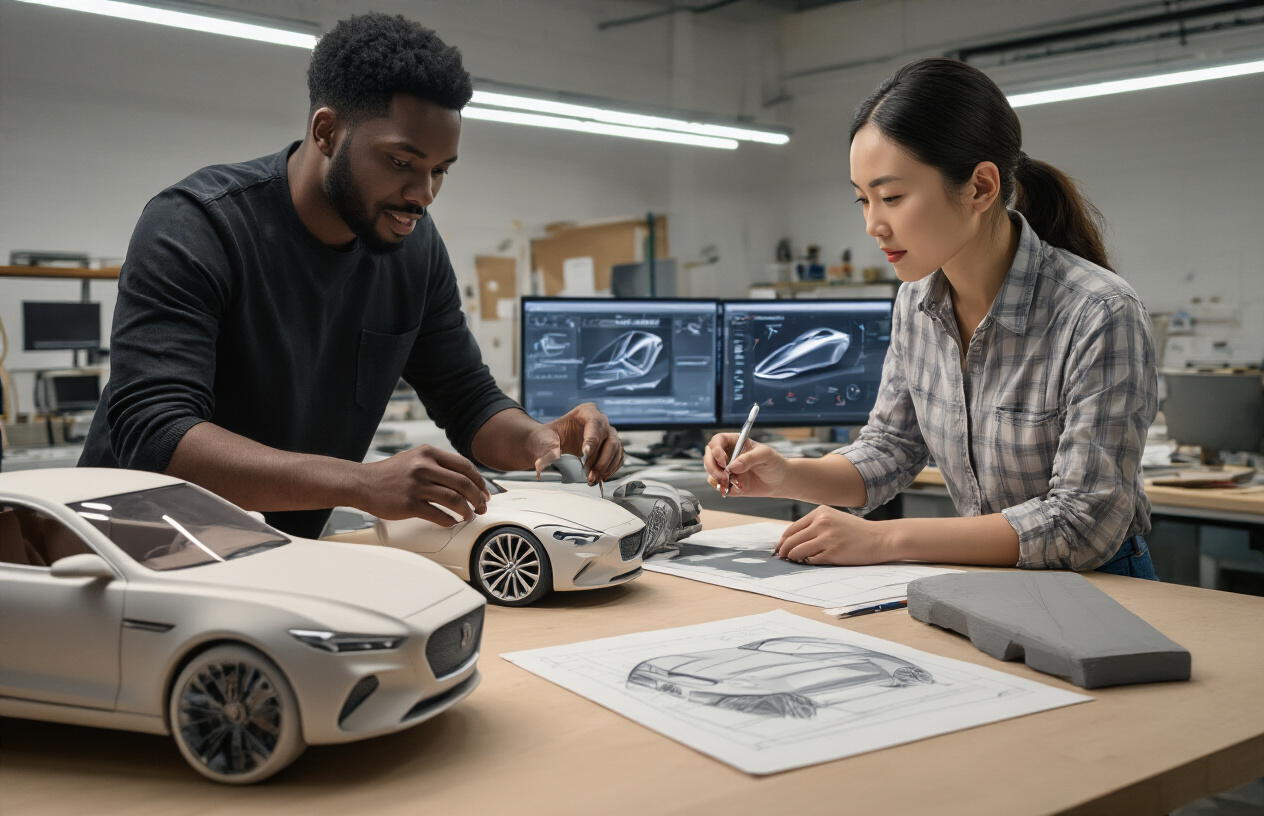
Legendary Automotive Designers Shaping Today’s Market
When you spot a Ferrari on the road, you’re not just seeing a car. You’re witnessing Flavio Manzoni’s vision brought to life. The man behind the Roma and SF90 Stradale has transformed Ferrari’s design language into something that makes gearheads weak at the knees.
Then there’s Ian Callum, the genius who revitalized Jaguar’s look. His F-Type is pure automotive seduction on wheels. And don’t get me started on Gorden Wagener, who’s turned Mercedes from your grandpa’s car into cutting-edge rolling sculptures with that sensual purity design philosophy.
These designers aren’t just drawing pretty pictures—they’re cultural architects shaping what we consider beautiful on the road.
Design Houses vs. In-House Studios
The battle between independent design houses and manufacturer studios is heating up:
| Design Houses | In-House Studios |
|---|---|
| Pininfarina (Ferrari collaborations) | BMW Design Works |
| Zagato (Limited editions) | Audi Design |
| Italdesign (Founded by Giugiaro) | Mercedes-Benz Advanced Design |
While Pininfarina created countless Ferrari masterpieces as an independent firm, many brands now keep their design talent in-house. BMW rarely outsources their design work anymore—that kidney grille (love it or hate it) comes straight from their own team.
The indie design houses bring fresh perspectives, but in-house teams maintain brand consistency. It’s like choosing between a Michelin-star restaurant and your grandma’s cooking—both can be spectacular for different reasons.
How Technology Has Changed the Design Process
Clay models used to be the only way to see a car design in 3D. Now? Designers can spin a virtual model in VR, walk around it, sit inside it—all before a single piece of metal is bent.
Digital sculpting tools like Alias have revolutionized how designers work. They can tweak a curve, adjust a line, and see the results instantly. And AI is joining the party, generating alternative designs that human designers might never have considered.
3D printing has compressed development time dramatically. A designer can create a digital model in the morning and hold a physical scale model by afternoon.
But here’s the kicker—despite all this tech, the best designers still start with pencil and paper. That human touch, the emotional connection between hand and idea, remains irreplaceable. Technology just helps bring those sketches to life faster than ever before.
Future Directions in Automotive Beauty
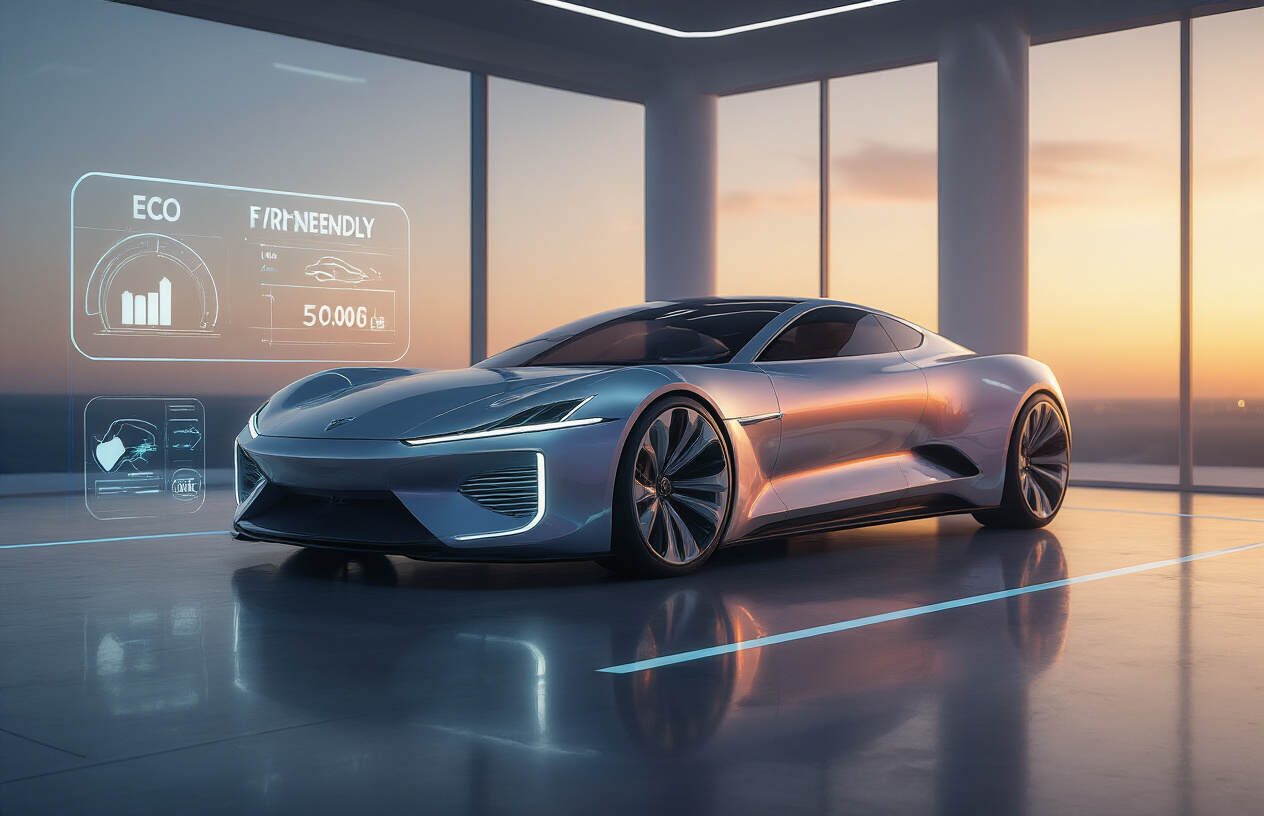
Electric Vehicles: New Design Freedoms
The EV revolution isn’t just about zero emissions—it’s unleashing car designers from their traditional shackles. Without bulky engines hogging space, designers are going wild with proportions we’ve never seen before.
Look at the Lucid Air. That car shouldn’t even be possible with its spaceship cabin and microscopic overhangs. Or the Rivian R1T with its gear tunnel running straight through the vehicle—try doing that with a driveshaft in the way!
Electric platforms are basically blank slates. Flat battery packs underneath mean interior space that makes gas cars feel like cramped coach seats. The Mercedes EQS takes this to the extreme with its “one-bow” design, basically a curved bubble optimized for both passengers and airflow.
Autonomous Cars: Reimagining Vehicle Aesthetics
Self-driving tech is completely flipping our idea of what makes a car beautiful.
When nobody’s driving, why face forward? The Audi Grandsphere concept swaps dashboards for living rooms. Steering wheels that disappear into the dash. Seats that swivel to face each other. Windows that transform into displays.
Beauty in autonomous vehicles isn’t about aggressive stances or muscular haunches anymore. It’s about creating stunning spaces that happen to move. The Canoo Lifestyle Vehicle doesn’t even try to look like a traditional car—it’s essentially a gorgeous lounge on wheels.
Sustainability’s Influence on Future Designs
Sustainability isn’t just a buzzword—it’s reshaping automotive beauty from the ground up.
Car design is getting stripped back. Less chrome. Fewer fake vents. More honest materials. The Polestar 2 embraces this minimalism with a quiet confidence that makes older luxury designs look desperate for attention.
We’re seeing gorgeous interiors made from recycled fishing nets, pineapple leaf fibers, and mushroom leather. BMW’s i Vision Circular concept isn’t just recyclable—it’s designed to be disassembled with a single tool. Beauty now includes what happens to a car after its life ends.
Personalization and the Bespoke Movement
Mass production is so last century. The most beautiful cars today are one-offs.
Bentley’s Mulliner division will match your car’s leather to the exact shade of your favorite lipstick. Roll-Royce will embed a map of the stars from any date in history into your Phantom’s headliner. Ferrari’s Atelier program creates cars so personal they’re practically family members.
Digital tech is democratizing this approach. Soon, you’ll configure not just colors but actual body shapes through augmented reality. 3D printing means your door handles could be modeled after your own signature.
The future of automotive beauty isn’t about following trends—it’s about creating cars as unique as fingerprints.
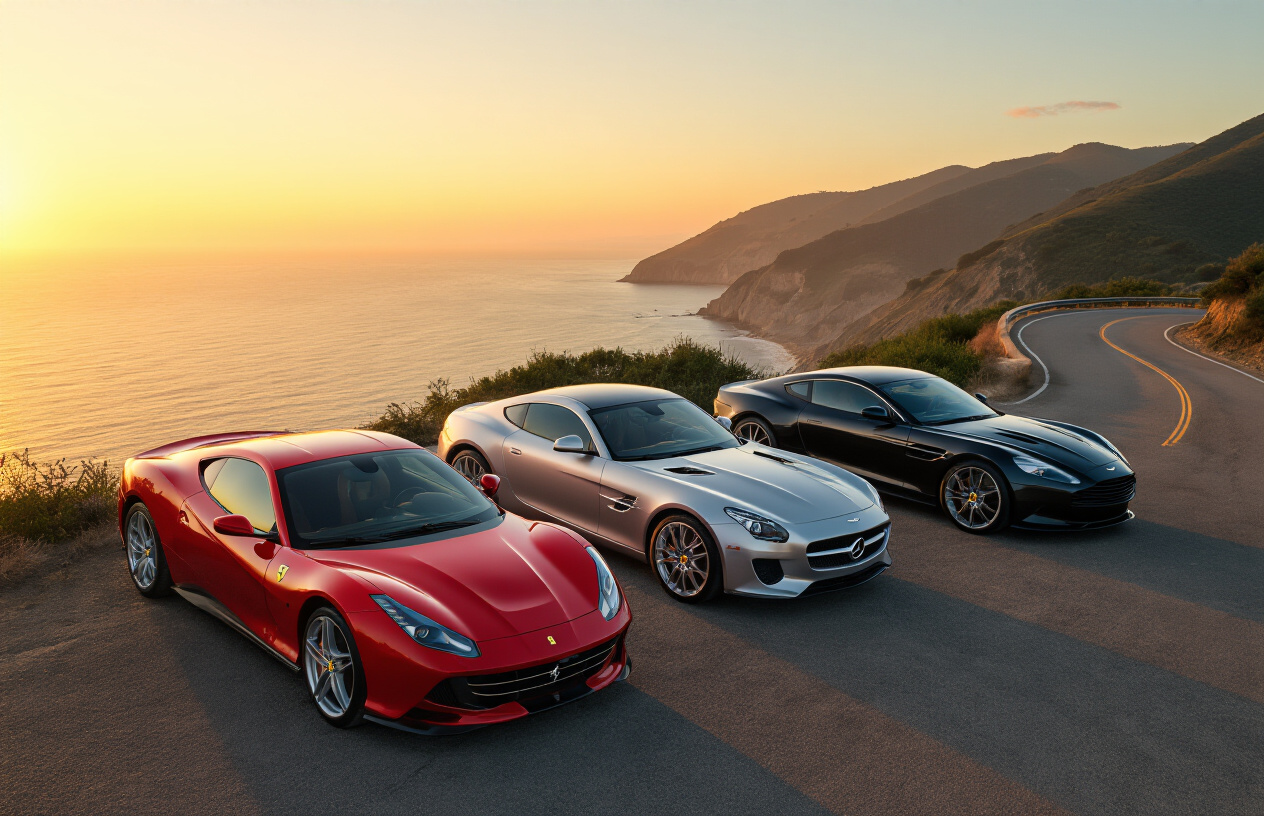
Today’s automotive landscape offers a feast for the eyes, from exotic supercars pushing the boundaries of performance and design to surprisingly beautiful mass-market vehicles that bring aesthetic excellence to everyday drivers. The evolution of car design has created distinctive elements—sleek silhouettes, dramatic lighting signatures, and thoughtful detailing—that define modern automotive beauty and showcase the vision of talented designers shaping our visual environment.
As we look to the future, automotive design continues to evolve with new technologies and sustainability concerns influencing aesthetics. Whether you appreciate the raw visual power of a Lamborghini or the refined elegance of a well-designed family sedan, today’s roads showcase an unprecedented diversity of sculpted beauty. The most stunning cars remind us that transportation can transcend pure function to become rolling works of art that inspire and delight.

